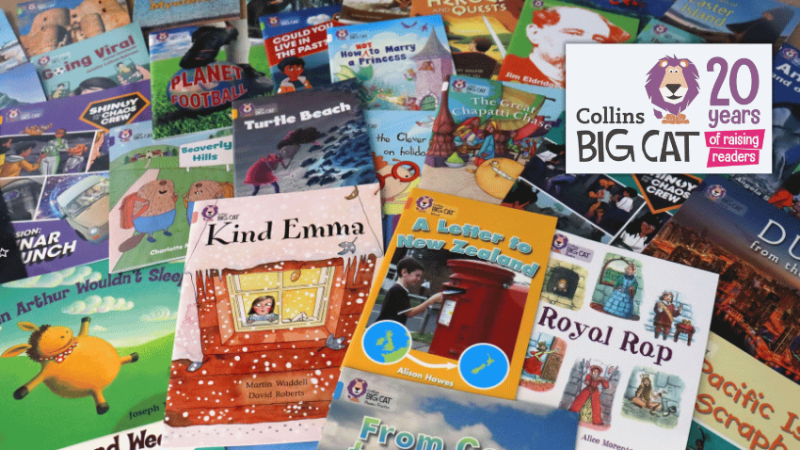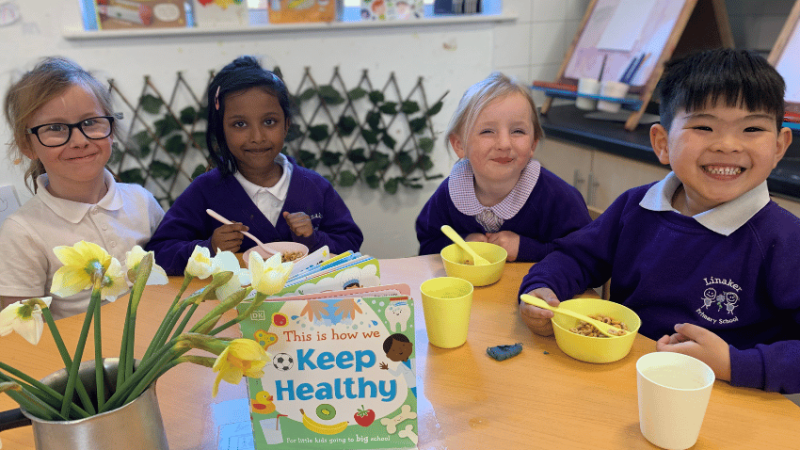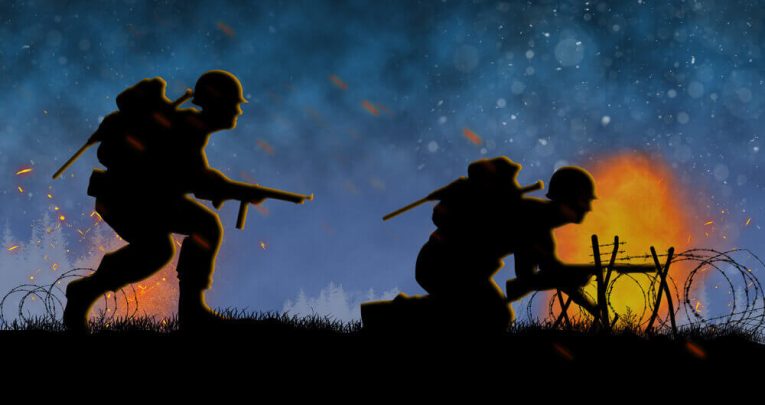Authors and Illustrator Visits Help Children Contextualise Books
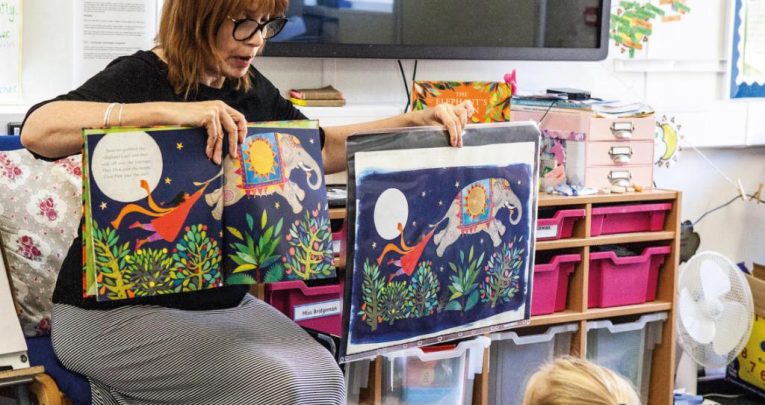
Interacting directly with authors and illustrators can help children contextualise a wide range of texts, says Helen Osterfield…
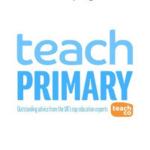
- by Teach Primary
- Leading professional development magazine for KS1 and KS2 educators

Each June, children’s authors and illustrators take part in the Pop Up Festival – a national schools’ literature festival that reaches 15,000 children aged 3-14 in classrooms, libraries, museums and galleries across England and Wales.
Interactive workshops led by visiting authors and illustrators kick-started pupils’ creative writing and illustration, with thousands of books supplied to participating primary, secondary and SEND schools in the process.
Here, a participating illustrator and two teachers share their experiences of the event, and discuss how developing pupils’ cultural capital can help them achieve their academic potential…
1 | The illustrator
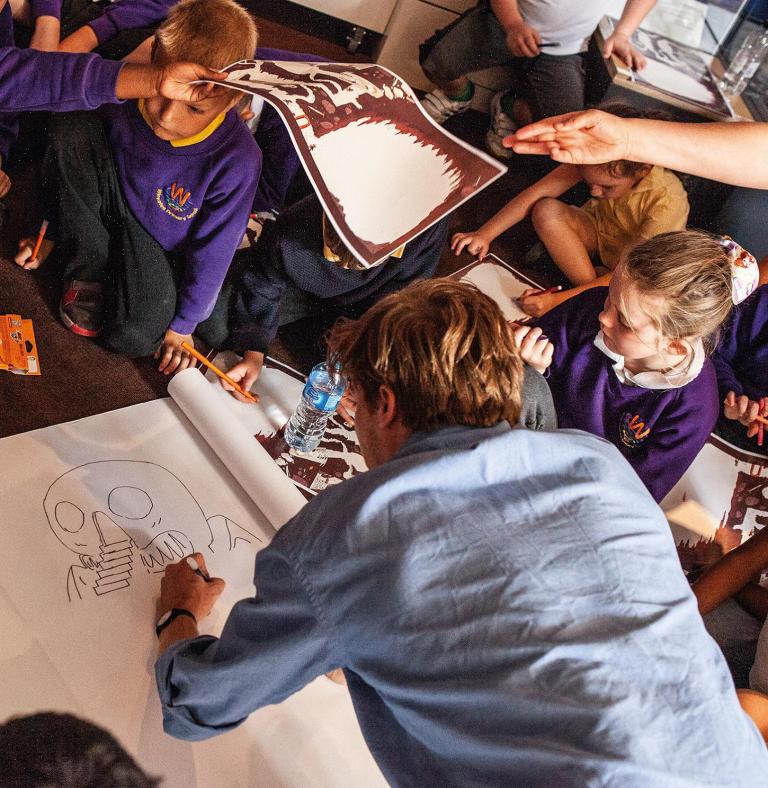
“It creates real and memorable learning”
“We began with the Pop Up pilot project and found the pupils engaged with the first book right from the start. It generated such interest across our small school: the creative juices began to flow and the pupils used the text as a way into an art and dance project that thoroughly challenged both them and the staff.
From there we took on the full event, which has lead our pupils to access a dozen different authors; we’ve taken part and achieved the initial Arts Award, and linked our texts to computing in such a meaningful way it has enhanced our IT offer and is now embedded in our curriculum.
However, the most amazing opportunity that Pop Up has given our small school was the Year Six visit to Kensington Palace to work with author Peter Bunzl; bringing the author and setting together for was powerful enough to inspire even our most reluctant readers.
What better way to bring the history to life than through an engaging story, and the story to life than by the reality of the historical palace, queen and rich heritage?
Any time allocated in the classroom has to deliver on several aspects of the curriculum to ensure it is well spent. This project does just that, and provides a great context for real and memorable learning.”
Helen Osterfield is headteacher at Tibberton CE Primary School, Shropshire.
“We’re raising cultural capital”
“In our school, Pop Up Festival has been instrumental in promoting a commitment to reading; developing a wide a range of strategies – including stylistic, analytical, and problem solving; and also raising cultural capital.
The carefully picked books are chosen to encourage engagement and to build a relationship between the narratives, as well as their authors and illustrators, and the reader.
The texts are challenging, and take centre stage in our learning processes at Winyates, stretching across all areas of the curriculum. During this time, pupils are able to really dig deep, developing an understanding for the language used, the author’s style and their motivation for writing.
They are able to question, compare and evaluate what they have read. They are able to give critical feedback as well as form and articulate their own ideas, based on their reading experiences.
By the time the children get to finally meet their author or illustrator in person, they really feel like they know them well.
Listening to an author describe their upbringing, their motivations for writing and their writing process, not only excites and motivates our children to read and write more, it also inspires them to have bigger aspirations.
This cultural capital is nurtured through the creative approach Pop Up encourages and helps develop, through its teacher workshops, and the relationships that are built between the pupils and the authors and illustrators along the way.”
Chris Favell is a senior teacher and literacy lead at Winyates Primary, Peterborough
3 | The SLT
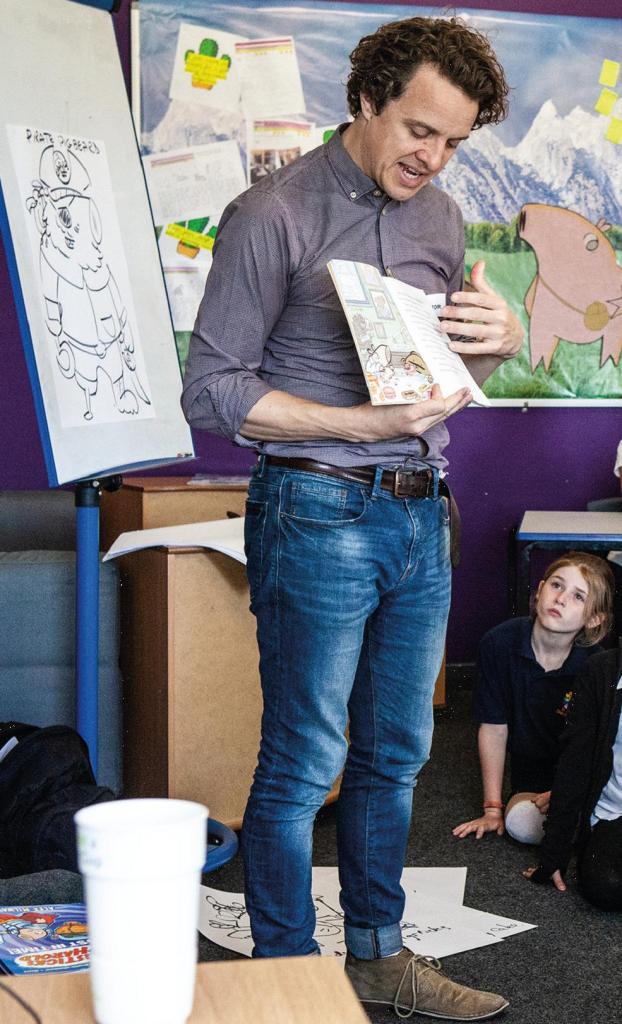
“It creates real and memorable learning”
“We began with the Pop Up pilot project and found the pupils engaged with the first book right from the start. It generated such interest across our small school: the creative juices began to flow and the pupils used the text as a way into an art and dance project that thoroughly challenged both them and the staff.
From there we took on the full event, which has lead our pupils to access a dozen different authors; we’ve taken part and achieved the initial Arts Award, and linked our texts to computing in such a meaningful way it has enhanced our IT offer and is now embedded in our curriculum.
However, the most amazing opportunity that Pop Up has given our small school was the Year Six visit to Kensington Palace to work with author Peter Bunzl; bringing the author and setting together for was powerful enough to inspire even our most reluctant readers.
What better way to bring the history to life than through an engaging story, and the story to life than by the reality of the historical palace, queen and rich heritage?
Any time allocated in the classroom has to deliver on several aspects of the curriculum to ensure it is well spent. This project does just that, and provides a great context for real and memorable learning.”
Helen Osterfield is headteacher at Tibberton CE Primary School, Shropshire.
“I am helping to open that creative door”
Trending
“Over the years I have become increasingly saddened by the effect of government cuts to school budgets. Recently I have visited schools where they don’t want to hand out too much paper to draw on because they can only use so much each term.
Schools that have had to close their library to make way for an extra classroom. Schools that used to pay for author/theatre/artist visits from their budgets, but now have to raise the money directly from the parents (not easy in many catchments).
No matter how well a school is run, these problems go far beyond leadership, as there increasingly seems to be less time, money and resources for the creative arts.
Education can never be ‘one size fits all’ and the creative arts can give children who struggle in traditional areas opportunities and experiences that can help them thrive.
I know this because I am dyslexic, and at school I really struggled with reading and spelling. It was art that opened a door for me when so many others seemed closed.
I was taken to the library, where I discovered the comic books that got me reading; and at school I was encouraged to draw, make and experiment, which led me eventually to a career as an illustrator.
Now, one of my favourite ways of introducing children to how words and pictures can work together to tell stories is to draw two versions of the phrase ‘The cat sat on the mat.’
In both versions the words stay the same, but one shows a sad feline locked out in the rain, and the other a happy creature inside in the warm. The children love to see how the pictures can change the story that the words are telling and are always keen to draw their own cats and mats to create their own completely different stories.
After a session, teachers often remark how exciting it is for the children to have someone with a different take on literacy to help them engage with it in a new way. And every time I visit a school with Pop Up, I feel like I am helping to open that creative door a little bit further.
It doesn’t matter where children come from; once that door is opened, they always want to walk through it – and when they do, the results can be amazing. And every time an artist, author or musician visits a school, the door is opened wider.”
Thomas Docherty, illustrator of Abracaxebra, The Knight Who Wouldn’t Fight and The Snatchabook, visited two schools in Telford
2 | The literacy lead
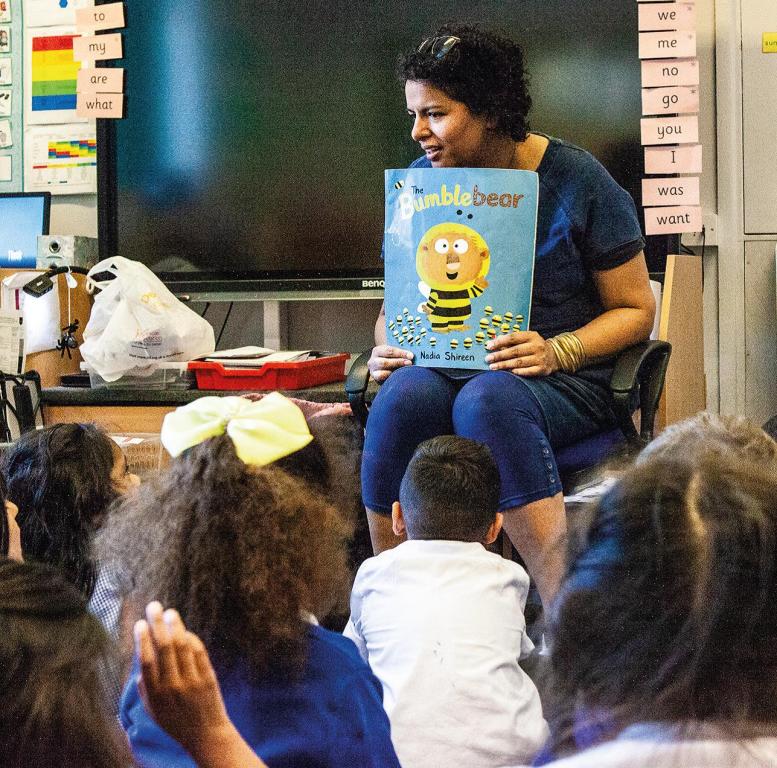
“We’re raising cultural capital”
“In our school, Pop Up Festival has been instrumental in promoting a commitment to reading; developing a wide a range of strategies – including stylistic, analytical, and problem solving; and also raising cultural capital.
The carefully picked books are chosen to encourage engagement and to build a relationship between the narratives, as well as their authors and illustrators, and the reader.
The texts are challenging, and take centre stage in our learning processes at Winyates, stretching across all areas of the curriculum. During this time, pupils are able to really dig deep, developing an understanding for the language used, the author’s style and their motivation for writing.
They are able to question, compare and evaluate what they have read. They are able to give critical feedback as well as form and articulate their own ideas, based on their reading experiences.
By the time the children get to finally meet their author or illustrator in person, they really feel like they know them well.
Listening to an author describe their upbringing, their motivations for writing and their writing process, not only excites and motivates our children to read and write more, it also inspires them to have bigger aspirations.
This cultural capital is nurtured through the creative approach Pop Up encourages and helps develop, through its teacher workshops, and the relationships that are built between the pupils and the authors and illustrators along the way.”
Chris Favell is a senior teacher and literacy lead at Winyates Primary, Peterborough
3 | The SLT

“It creates real and memorable learning”
“We began with the Pop Up pilot project and found the pupils engaged with the first book right from the start. It generated such interest across our small school: the creative juices began to flow and the pupils used the text as a way into an art and dance project that thoroughly challenged both them and the staff.
From there we took on the full event, which has lead our pupils to access a dozen different authors; we’ve taken part and achieved the initial Arts Award, and linked our texts to computing in such a meaningful way it has enhanced our IT offer and is now embedded in our curriculum.
However, the most amazing opportunity that Pop Up has given our small school was the Year Six visit to Kensington Palace to work with author Peter Bunzl; bringing the author and setting together for was powerful enough to inspire even our most reluctant readers.
What better way to bring the history to life than through an engaging story, and the story to life than by the reality of the historical palace, queen and rich heritage?
Any time allocated in the classroom has to deliver on several aspects of the curriculum to ensure it is well spent. This project does just that, and provides a great context for real and memorable learning.”
Helen Osterfield is headteacher at Tibberton CE Primary School, Shropshire.






